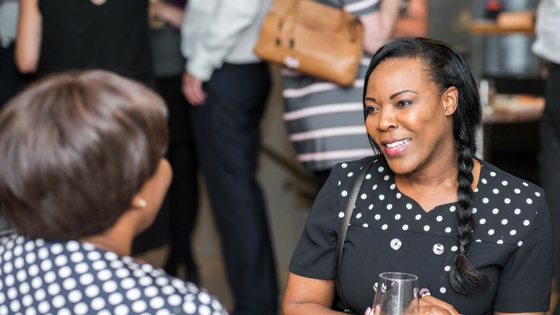
Held at Cambridge Arts Theatre, one of the City’s most accessible venues, guests including Paralympian Anne Wafula-Strike were able to preview this vital and innovative new mobile app, dedicated to helping disabled people access life-saving relief services during emergencies.
When disasters strike, people with disabilities are often among the worst affected and the last to receive help. With a distinct lack of practical advice on disability in disaster scenarios, and with 1 in 7 individuals living with some form of disability worldwide (80% of these living in developing countries), a large number of people are missing out on life-saving relief services like food, shelter or medical support.

In response to this, CBM developed a set of guidelines which cover practical advice for field workers in emergency response scenarios on how to make relief services accessible to people with disabilities but also to older people, pregnant women and children. To make this content available and provide a tool for users who have to implement the guidance in the field, they approached us to create the Humanitarian Hands on Tool (HHOT).
This custom mobile app, which was built from the ground up with a focus on accessibility, provides practical, step-by-step guidance that emergency workers can access freely and easily to ensure that their relief efforts leave nobody behind.
Six months on from the initial pro-bono work we did with CBM to help them explore the idea and prove the concept, and after a great deal of work to design and build the app, we have a result which we were immensely proud to showcase at the event.

It’s a great morale boost knowing that we are developing something that will make a difference to people all over the world. We are all aware that technology has the power to transform lives for the better but it’s easy to let that knowledge slip into the back of your mind when you’re working with technology every day. Working on this hands on tool provides us with constant reminders of the power technology has to improve people’s lives and the barriers it can help to overcome. We’re very eager to see how it will be used in the real world and observe the difference it will make.

The Humanitarian Hands on Tool (HHOT) is currently at prototype stage and feedback is being provided both by people with disabilities and by agencies providing emergency relief to ensure that the content is as relevant and full as possible. The final version will be completed in 2017.
If you’d like to read more, take a look at the case study and further photos from the event can be found on our Flickr account.
